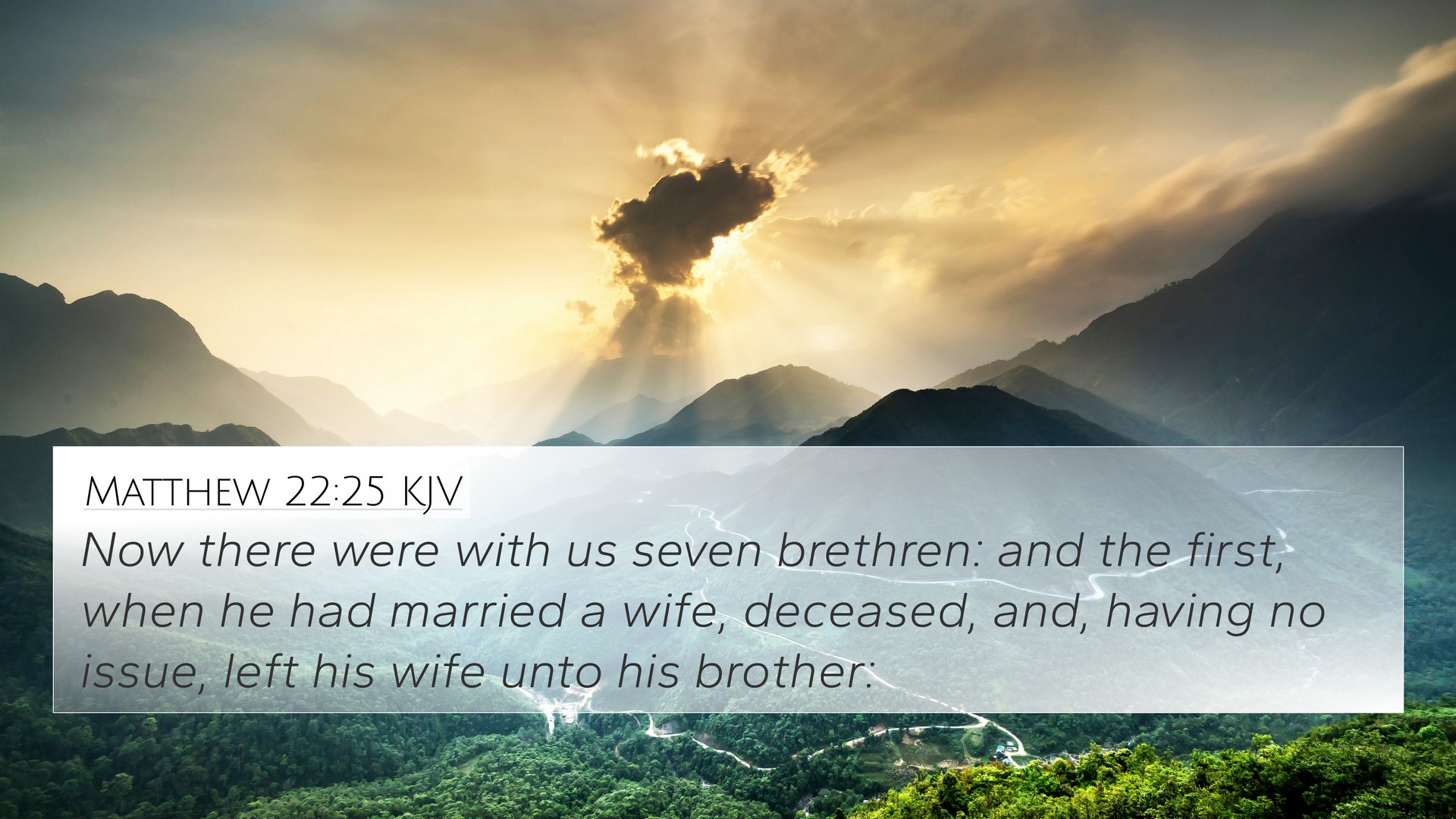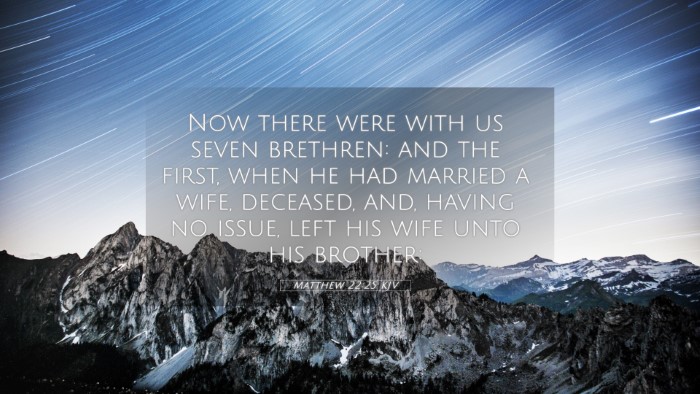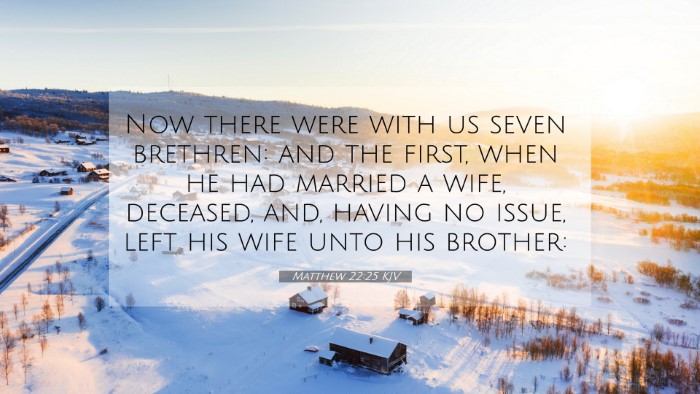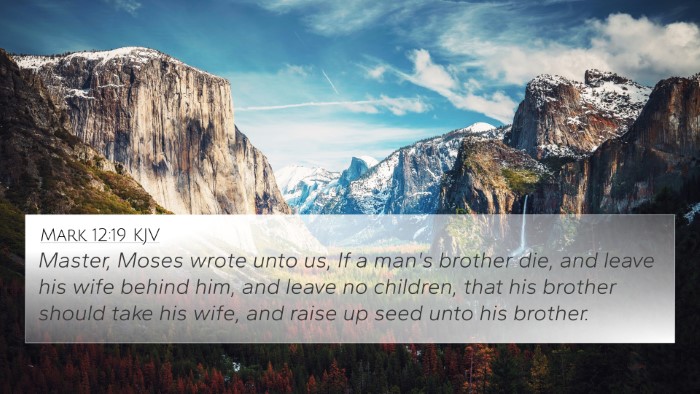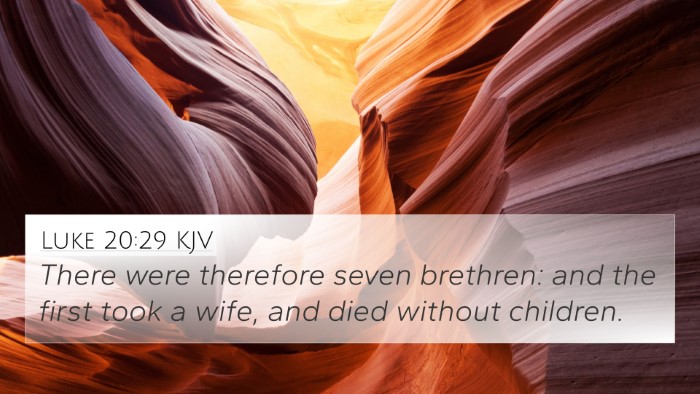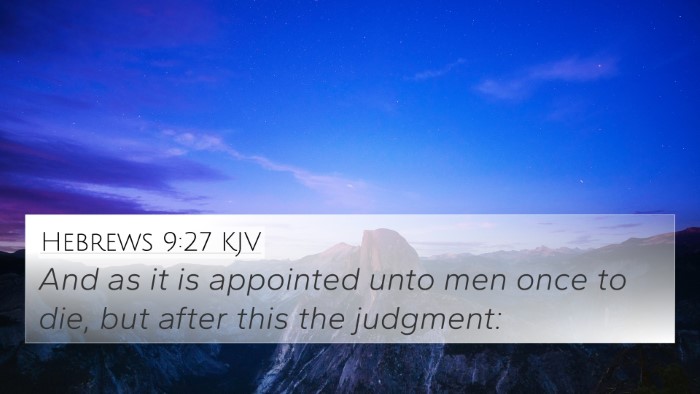Understanding Matthew 22:25
Verse Reference: Matthew 22:25 states, "Now there were with us seven brothers: and the first, when he had married a wife, deceased, and having no children left his wife unto his brother:"
Contextual Background
This verse is part of the narrative where the Sadducees, who deny the resurrection, present a hypothetical situation to Jesus regarding a woman who married seven brothers in succession according to the Levirate marriage law. This scenario is intended to challenge the concept of resurrection and illustrate what they perceive as the absurdity of the belief in life after death.
Key Themes
- Resurrection: The Sadducees’ inquiry centers around the resurrection and its implications.
- Levirate Marriage: The practice of a man marrying his deceased brother's widow to preserve family lineage.
- Life After Death: The verse invites reflection on the beliefs surrounding afterlife existence.
Commentary Insights
Matthew Henry: Henry highlights that the Sadducees were trying to trap Jesus with their extreme example, showcasing the ignorance of their understanding of eternal life and God’s power. He emphasizes that Jesus’ response would clarify the misconceptions about resurrection and marriage in heaven.
Albert Barnes: Barnes notes that the Sadducees’ question reveals their denial of the resurrection. He discusses how their argument is flawed as it is based on a misunderstanding of the nature of life after death. He further explains that earthly laws will not apply in the Kingdom of Heaven.
Adam Clarke: Clarke elaborates on the cultural significance of Levirate marriages and points out that the incident shows the depth of the Sadducees’ religious blindness. He stresses that their hypothetical question was meant to provoke rather than seek genuine understanding.
Cross-References
Matthew 22:25 connects with several other Bible verses that illuminate themes of resurrection, marriage, and life after death. Some notable cross-references include:
- Genesis 38:8-10: The origin of the Levirate marriage law.
- Deuteronomy 25:5-6: The commandment regarding levirate marriage.
- Luke 20:33-36: Parallel account where Jesus addresses the same question posed by the Sadducees.
- Mark 12:23-25: Another synoptic account highlighting Jesus’ teaching about the reality of life after death.
- 1 Corinthians 15:12-22: Paul discusses the resurrection of the dead.
- Matthew 22:30: Jesus speaks directly about the nature of marriage in the resurrection, emphasizing its different nature in heaven.
- Revelation 21:4: A description of a future state without death or sorrow that reinforces the idea of eternal life.
- Romans 6:5: Connection to eternal life through Christ’s resurrection.
Connections Between Bible Verses
Matthew 22:25 serves as a pivotal verse for cross-referencing Biblical texts. It allows readers to explore several thematic Bible verse connections related to life after death and God’s purposes. The inter-Biblical dialogue established through these connections expands understanding not only of this passage but also of doctrines regarding the resurrection and eternal life across Scripture.
Importance of Cross-Referencing
Understanding the connections between Bible verses, such as those illustrated by Matthew 22:25, enhances biblical comprehension and interpretation. Utilizing tools like a Bible concordance or a cross-reference Bible study guide can be extremely beneficial.
As readers examine how different passages relate—such as the connections between the Old and New Testament—they will find that these insights not only aid in personal study but also prepare one for teachings and sermons.
Engaging in cross-referencing Bible study methods encourages deeper reflection on the integrative nature of scripture, allowing believers to identify similarities between key biblical themes.
Conclusion
Matthew 22:25 stands as a significant scripture that prompts reflection on the nature of marital relationships in the context of resurrection. The insights derived from public domain commentaries enrich the study of this verse, revealing the depth of biblical truths regarding the afterlife. By engaging in cross-referencing methodologies, readers can develop a more profound understanding of scriptural teachings and their practical implications.
